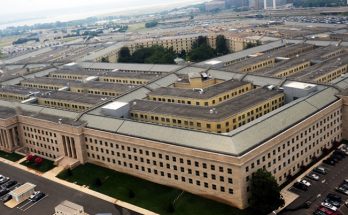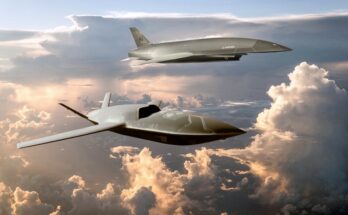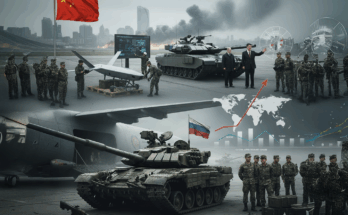
The fall of Kabul came much faster than anticipated, but U.S. President Joe Biden says he remains confident in his decision to withdraw American forces. Afghan President Ashraf Ghani fled the country on Sunday and Taliban soldiers took over the presidential compound later in the day. Meanwhile, around 6,000 U.S. troops poured into the country in recent days, but those troops aren’t there to halt the Taliban offensive. Rather, they were sent to the country to help evacuate American citizens and a number of vulnerable Afghan nationals as the Afghan government collapsed.
The Taliban had been rapidly taking over portions of the country in recent weeks as the U.S. accelerated its military drawdown. Earlier this summer, a U.S. intelligence assessment said there was a risk the capital city could fall within six to 12 months after the withdrawal of U.S. military personnel. A more recent report accelerated that timeline to between 30 and 90 days. Even that report was wildly optimistic, and the Taliban ultimately flooded the city before the U.S. withdrawal was even complete. The U.S. embassy had recently decided to evacuate much of its personnel, but was intending to keep a core diplomatic presence in Kabul as a show of support for the Afghan government. However, as the Taliban began entering the city, the U.S. ambassador took down the American flag and evacuated to Hamid Karzai International Airport. At this time, there are effectively no plans to leave any American personnel in Afghanistan.
Commercial operations ceased at the airport as thousands of Afghan citizens swarmed the facility. Even military flights were temporarily halted, and dramatic video on the ground showed an American C-17 taxiing the runway with a swarm of Afghan citizens running alongside it, with some people even attempting to grab onto the aircraft in hopes of securing a ride to safety.
Despite the chaotic scene, it seems that little force was needed to take the city, at least so far. Afghanistan’s interior minister, Abdul Sattar Mirzakwal, indicated that an agreement had been made for the peaceful transfer of power for greater Kabul, according to a New York Times report. At the same time, the head of U.S. Central Command, Gen. Kenneth F. McKenzie Jr., met with Taliban officials on Sunday warning them not to interfere with the evacuation process. The Taliban have little motivation to interfere, however, because the rapid withdrawal of U.S. forces is exactly what the group wants to achieve.
A number of U.S. lawmakers had protested the rapid withdrawal of U.S. forces, particularly as the Taliban offensive continued to sweep the country. Nevertheless, President Biden held firm to his stance that he believed it was time for U.S. troops to come home. Before the capital fell, he said the U.S. had spent the better part of 20 years building up Afghan security forces, and it was now up to them to hold the line. In reality, U.S. support of Afghan security forces was mismanaged from the beginning. In the end, a constant flow of cash, weapons, and training wasn’t enough to help a government ravaged by corruption. The result was an Afghan security force that appeared strong on paper but in reality was completely hollow and unprepared to fight. A permanent small-scale U.S. military presence in the country may have been enough to hold off the Taliban over the long term, but the U.S. still would have run the risk of a violent resurgence requiring the influx of reinforcements and a return to all-out war.
Biden delivered a speech on Monday afternoon in which he said he will not waver in his decision to bring the war to a close, despite the surprising speed with which the Taliban took over the country. Biden said the U.S. originally invaded Afghanistan to take down those responsible for the attacks on 9/11 and to ensure that al-Qaeda could not use the country as a base of operations. He said those goals were met years ago, and that the U.S. mission was never supposed to have been nation-building. “Our only vital national interest in Afghanistan remains today what it has always been: preventing a terrorist attack on [the] American homeland,” he said. Biden pointed out that he opposed the initial surge in Afghanistan in 2009, and he believed the mission should be relegated to counterterrorism, not counterinsurgency or nation-building.
From a security standpoint, one of the biggest concerns for the U.S. will be the potential for the Taliban to support terrorist groups intent on targeting U.S. interests at home or abroad. In the long run, how the withdrawal is judged could be determined by whether or not Afghanistan becomes a terrorist safe haven. For now, Biden said that the terrorist threat has spread well outside of Afghanistan, with current threats including Al-Shabaab in Somalia; the militant Islamist group al-Qaeda in the Arabian Peninsula; Al-Nusra in Syria; and ISIS, which is trying to build a caliphate in Syria and Iraq and working to establish connections in Africa and Asia. He said the U.S. will still be able to monitor the terrorist threat in Afghanistan from a distance and will act quickly and decisively if needed.
In the end, Biden said he was not willing to sacrifice any more American lives for a cause the Afghan government and security forces were unwilling to fight for themselves. He said if they couldn’t make a stand against the Taliban now, then it wouldn’t matter if U.S. forces stayed for another year or another 20 years. So while Biden acknowledged that the fall of Kabul came much sooner than expected, he still believes that the time is right for Americans to come home.
It remains to be seen how the U.S. will engage the Taliban from this point forward. Earlier this month, a U.S. envoy said a Taliban government that comes to power through force would not be recognized. That statement was likely intended to serve as a deterrent, but it did little to slow the Taliban offensive.
At the same time, the fall of the U.S.-backed government opens the door for other countries like China, Russia, and Iran to exert their political influence in the region. Taliban leaders have already visited those countries in recent weeks in an effort to begin the process of gaining international recognition. Whether the group can gain recognition from the rest of the international community may depend on the nature of the transition. The Taliban insist they have changed since they last ruled the country, but a return to oppressive rule would make constructive engagement with the international community less likely.
Forecast International’s International Military Markets service provides a country-by-country examination of the military capabilities, equipment requirements, and inventories of over 120 nations. The individual country reports are structured to condense a vast range of information into concise segments. Governmental and political structures, political and economic trends, national and defense budgets, force structures, military planning requirements, recent and future procurements, the security environment, threat assessments, and military postures – all are detailed in these six services broken out by region. Click here to learn more.
Shaun's deep-rooted interest in military equipment continues in his role as a senior defense analyst with a focus on the United States. He played an integral role in the development of Forecast International's U.S. Defense Budget Forecast, an interactive online product that tracks Pentagon acquisition programs throughout the congressional budget process. As editor of International Military Markets – North America, Shaun has cultivated a deep understanding of the vast defense markets in the United States and Canada. He is a regular contributor to Forecast International's Defense & Security Monitor blog and has co-authored white papers on global defense spending and various military programs.




